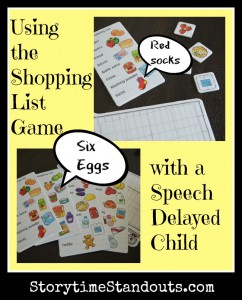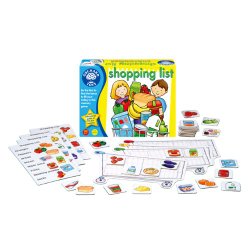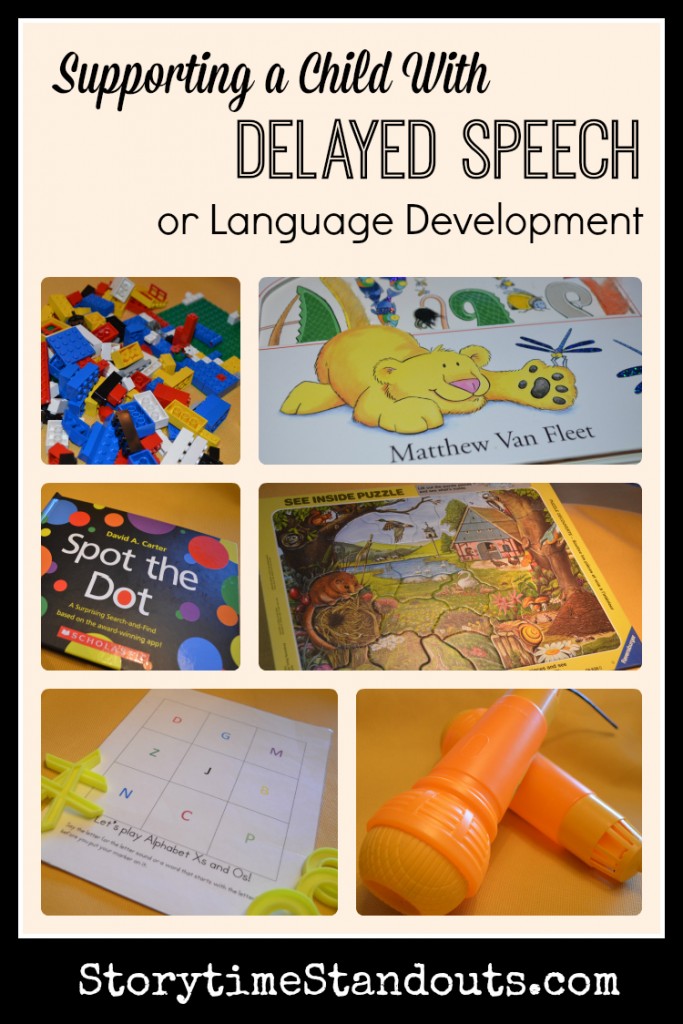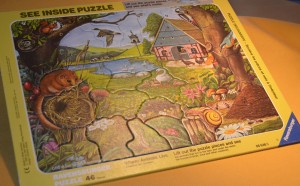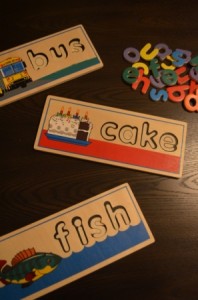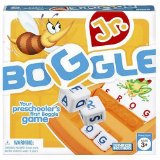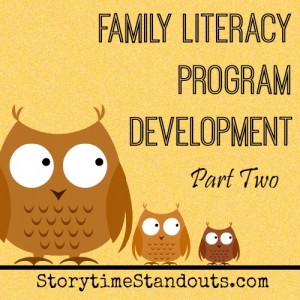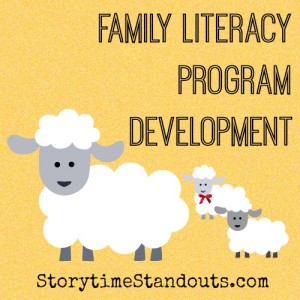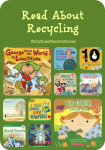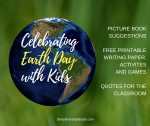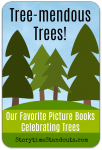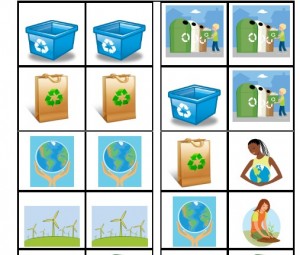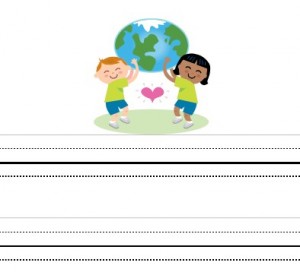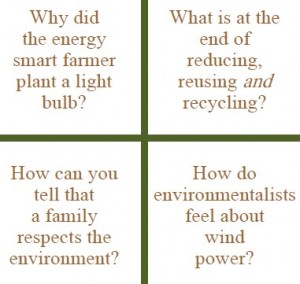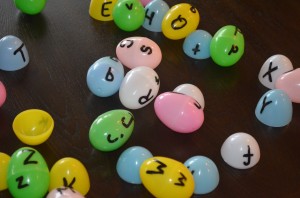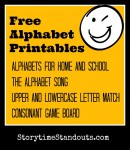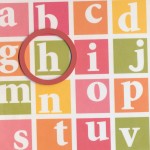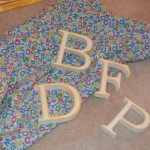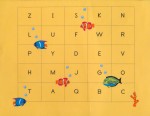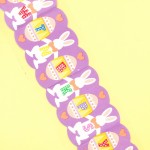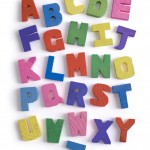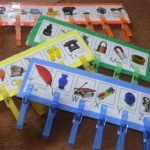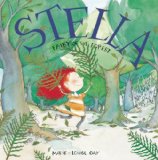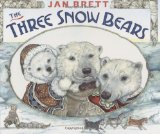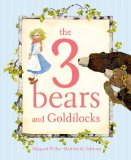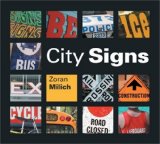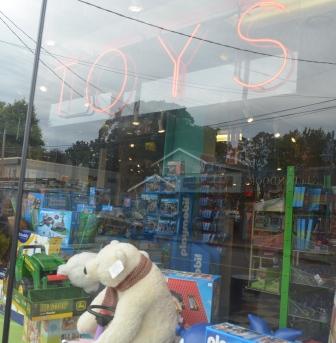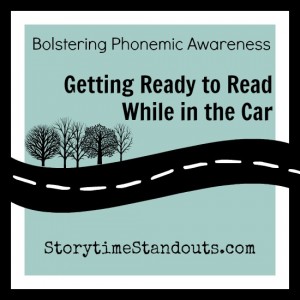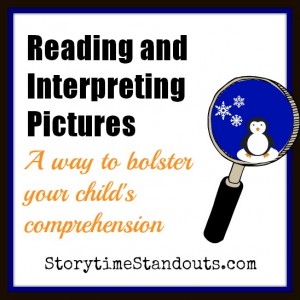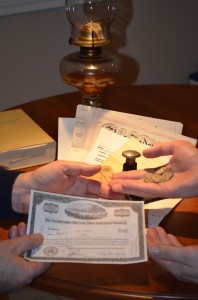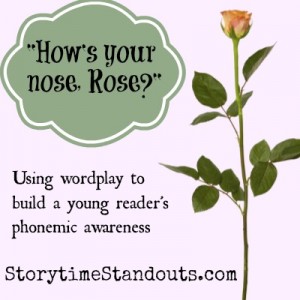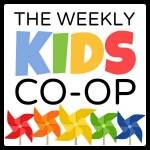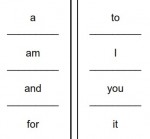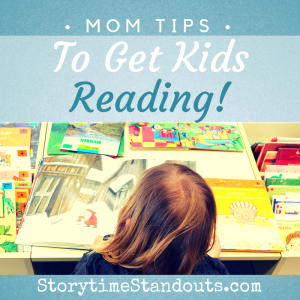
Posts Tagged ‘learning activities’
19 Mom-Approved Tips and Tricks for Encouraging Kids to Read
Great beginnings – With Writing it’s All About a Great Hook
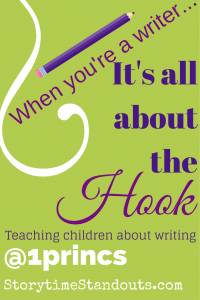 Meghan Trainor says it’s all about the base, but really, in writing, it’s all about the hook. The beginning. It is in the beginning that we, as readers, decide if we will carry on. Do we attach to the characters? Are we pulled in? Are there stakes that make us want to know right away how things are going to turn out? The writing, and beginning lines, that do this vary from person to person. In the last two weeks, I’ve been working on writing with my students and we’ve focused, a lot, on great beginnings. I thought I’d share some of the activities we did to look at how students could learn about capturing their reader’s interest. It was fun, interesting, and spending the time to establish the link between what we read and what we write, strengthened their stories.
Meghan Trainor says it’s all about the base, but really, in writing, it’s all about the hook. The beginning. It is in the beginning that we, as readers, decide if we will carry on. Do we attach to the characters? Are we pulled in? Are there stakes that make us want to know right away how things are going to turn out? The writing, and beginning lines, that do this vary from person to person. In the last two weeks, I’ve been working on writing with my students and we’ve focused, a lot, on great beginnings. I thought I’d share some of the activities we did to look at how students could learn about capturing their reader’s interest. It was fun, interesting, and spending the time to establish the link between what we read and what we write, strengthened their stories.
Write the first line of several novels on the board. Do not include the book name but make it clear that every line is from a different novel (when I did this, I didn’t make that clear and the students thought I was introducing them to a VERY strange book).
Have the students read the lines and talk about their favourites with a partner. Then have them talk about why. Give them a chance to share their opinions with the class. (Sentence frames are great for this kind of sharing: My favourite first line was ____ because ____.)
Seeing who liked what lines and why is interesting as both the teacher and for the students. From here, after a good discussion about which lines are best and why, we talk about what makes them good. We ended up brainstorming a list of good hooks: questions, mystery, surprise, humor, and more were among the list.
Students were given time to write a great first line. And their favourite part, of course, was the opportunity to share it. They tried to outdo each other with their captivating sentences.
The activities that followed this lesson were taught with the purpose of further establishing the connection between reading and writing.
Music and story telling:
I told the students we were going to listen to a number of songs and their job was to try to listen to the story that the artist told. We talked about how amazing it is that song lyrics basically tell a whole story in about three minutes.
This was very fun. The students listened, speculated, pointed out key words, told me what they thought the artist was trying to say, how they felt, why they might have felt this way. We used Speak Now (Taylor Swift), The Man Who Never Lied
(Maroon 5) and How to Save a Life [Clean]
(The Fray). We listened only to the beginnings (about 30 seconds) and the discussions that unfolded based on what the students heard in that time were excellent. They had theories and reasons for those theories that were mature and insightful. The best discussion came from How to Save a Life. Very powerful.
After this, we talked about how music sets a tone and the students were asked to choose a song that would be a good opening if their creative story was to be made into a movie. It was so awesome to see the students connect the tone of the music with the tone of their stories. Some were mysteries, some were comedies, but the best part was that by sharing their song choice, their classmates were able to guess the feel of their story.
And because the best way to encourage writing is to give them time to write (after getting them pumped up to do so), I gave them time to work on their stories.
Before the students shared their stories with each other, we reviewed what makes a great hook. I taught them the secret I didn’t learn until my late thirties (on Twitter no less). That “secret” was that to build a strong story, you need to know what your character wants and what is stopping them from getting it. I taught them the sentence frame I use (thanks again Twitter peeps):
____________ wanted _______________ but _____________.
(ie: Alice wanted an adventure but the White Rabbit led her down a rabbit hole and she wasn’t sure she would be able to get home).
We did examples of this so the idea became more concrete and it was a great guide for them when helping each other edit. Was your partner able to say, the main character wanted “blank” but “blank” was stopping them. If the student did that and the story worked toward a solution, had an engaging opening line, a beginning, middle, and end, along with the 5 W’s (Who, Where, What, When, Why), then the story could be brought to me for further editing.
This is where we’ve left off for now. From here, we’ll continue to edit the stories, do good copies, and then share them as a class. But the students are already paying more attention to great first lines.
Reading and writing are inextricably linked. Some kids don’t like reading and some don’t like writing. But chances are good that they don’t mind one of them. So try connecting the lesson with relevant activities (such as dissecting their favourite songs) to get them invested. I like seeing the students become more aware of themselves as readers, writers, and people. I like watching them establish what they like and why because I believe it helps them make choices that are more suited to their own tastes.
One of my favourite things is going to the library with my class and having them help each other find books or bring a book to me to tell me what’s great about it. Think about your own favourite line from a book or a movie. Talk to your students, or you child, about it. It ends up being great dialogue and a lot of fun.
What are your favourite first lines?
Using the Shopping List Game with a Speech Delayed Child
You may have read some of my previous posts about working with speech delayed children. I visit the family three times each week and I work with a four year old boy and his five year old sister. Today, I will focus on my work with the boy. I use a variety of techniques to elicit speech and expand his vocabulary. Without a doubt, one of his favorite activities is the Shopping List Game. The box includes four shopping lists, four shopping carts and thirty two items you might pick up at a grocery store. Fresh fruit (three red strawberries, two green apples), vegetables (three orange carrots), chicken, bacon, fish, bread, pizza, dairy products (milk and cheese) are included along with bubble bath, laundry soap and toilet paper. In short, for someone who wants to introduce new vocabulary and encourage discussion, this offers a treasure trove of material.
When we first used the game, we used it as a memory game and we alternated turns, trying to find everything on our lists. The activity has evolved and now my young student lays out all four carts and shopping lists in front of him. He picks up a food item and determines which list it is on and which cart it belongs in. As he does this, we talk about each card and the illustration on it: “Three red strawberries, six fresh eggs, one loaf of bread, etc.”
With the guidance of an adult, a relatively inexpensive and uncomplicated game offers up great learning opportunities for a speech delayed child – or any child.
Note: My copy of the game was produced by Orchard Toys. Some of the items are labelled using terms that are more common in the United Kingdom than in North America. For example, washing powder as opposed to laundry detergent. This is not an isse from my perspective because I am using the activity to encourage verbal interaction (as opposed to reading).
Shopping List Memory Game at Amazon.com
Shopping List Booster Pack – Fruit & Veg at Amazon.com
Supporting a Child With Delayed Speech or Language Development
My experiences working with a child with delayed speech
Since September 2013, I have been working twice a week with a four year old boy who has delayed speech. He lives in a bilingual household and he has one older sibling – a girl who also had delayed speech. It has been enormously rewarding to help this child find his voice. He is unfailingly happy and is always excited to welcome me and my “bag of tricks” into his home.
Here are some of the items that have been particularly helpful as we find ways to engage him verbally.
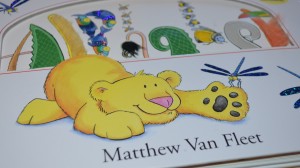 Alphabet by Matthew Van Fleet has been our go-to alphabet book.
Alphabet by Matthew Van Fleet has been our go-to alphabet book.
At almost every one of our sessions, my student has touched, lifted flaps and pulled the tabs of this cheerful and engaging alphabet book and accompanying (pop up) poster. Whether feeling the alligator’s scaly tail or the yak’s shaggy head, this is a book that children love to explore through touch.
Phonemic awareness is also supported as the author effectively uses alliteration, ‘Wet waddling Warthogs,’ rhyming and onomatopoeia, ‘Furry Lions roar, Whiskered Mice squeak, Hungry newborn Nightingales – cheep, cheep, cheep!‘ while introducing a variety of animals. Older children will notice that extra details have been added to the illustrations but not the text. Termed, Safari Sightings, these animals and plants are illustrated and listed in an afternote.
Alphabet won the following
2008 National Parenting Publications Gold Award
Parenting Favorite Book of the Month, April 2008
Top Ten Children’s Books of 2008, Time.com
A New York Times Children’s Bestseller (2008)
I can’t tell you how many times we have solved this Ravensburger See Inside Puzzle together. My young student happily turns the puzzle upside down, and together we turn all the puzzle pieces over. We chat as we start with the corners and work towards the middle of the puzzle. There are so many ways to enrich a child’s vocabulary, understanding and problem solving as we talk about the puzzle pieces and their attributes while noticing the plants, insects, animals, birds and structures featured in the puzzle itself.
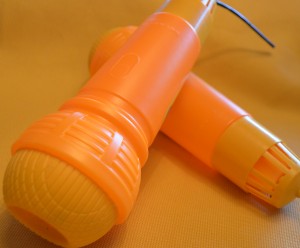 Rather than focusing on the enunciation of specific sounds or words, I want to encourage playing with sound and making a variety of sounds. It is amazing how an inexpensive plastic toy ‘Echo’ microphone can encourage a child to sing, make sound effects and speak. I pick up an Echo Mic and put the other one on the table. Before long, we are both singing The Alphabet Song or The Wheels on the Bus or Happy Birthday. I hate to think what we sound like but progress is progress and the plastic ‘Echo” microphone has helped us along the way.
Rather than focusing on the enunciation of specific sounds or words, I want to encourage playing with sound and making a variety of sounds. It is amazing how an inexpensive plastic toy ‘Echo’ microphone can encourage a child to sing, make sound effects and speak. I pick up an Echo Mic and put the other one on the table. Before long, we are both singing The Alphabet Song or The Wheels on the Bus or Happy Birthday. I hate to think what we sound like but progress is progress and the plastic ‘Echo” microphone has helped us along the way.
Download Song Sheets
 The Wheels on the Bus
The Wheels on the Bus
Free printable lyrics for The Wheels on the Bus
 The Alphabet Song
The Alphabet Song
Free printable lyrics for The Alphabet Song
10″ Echo Mic (Colors may vary) at Amazon.com
Magic Mic Novelty Toy Echo Microphone-Pack of 2 at Amazon.ca
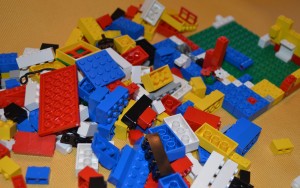 As we work toward improved verbal communication, I want to ensure that my student has a rich listening or receptive vocabulary as well as a large speaking or expressive vocabulary so I want to provide him with repeated meaningful encounters with words. I want him to hear and know colors, numbers, positional words (over, under, beside, inside) and nouns (windows, doors, wheels, roof, trees, flowers, bricks, fences, house, car, truck, steering wheel). Of course, I turn to my favourite toy. Each day I arrive with a bucket of Lego . We build houses and towers, we look for small bricks and blue bricks and yellow, white, red, and black bricks. We add windows and doors, stairs and roofs. And I talk about everything we do. I chat constantly and now he chimes in.
As we work toward improved verbal communication, I want to ensure that my student has a rich listening or receptive vocabulary as well as a large speaking or expressive vocabulary so I want to provide him with repeated meaningful encounters with words. I want him to hear and know colors, numbers, positional words (over, under, beside, inside) and nouns (windows, doors, wheels, roof, trees, flowers, bricks, fences, house, car, truck, steering wheel). Of course, I turn to my favourite toy. Each day I arrive with a bucket of Lego . We build houses and towers, we look for small bricks and blue bricks and yellow, white, red, and black bricks. We add windows and doors, stairs and roofs. And I talk about everything we do. I chat constantly and now he chimes in.
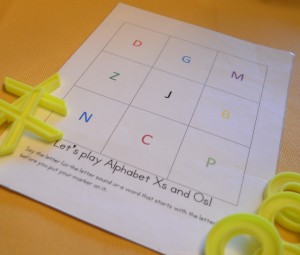 From the start, we have played Tic Tac Toe. I made a laminated game board (that includes a letter of the alphabet in each square) and I use Xs and Os from a dollar store game. When we first played, his job was to say, “Your turn,” after he played his “O.” Now, he says the letter name in the box and a word that begins with the letter, “C is for Cat.” He also says, “Your turn, ” and “I win!” He has never tired of this simple game. When we first started, he said very little. Now, it is a constant exchange of short sentences and the joy of communicating about a shared activity.
From the start, we have played Tic Tac Toe. I made a laminated game board (that includes a letter of the alphabet in each square) and I use Xs and Os from a dollar store game. When we first played, his job was to say, “Your turn,” after he played his “O.” Now, he says the letter name in the box and a word that begins with the letter, “C is for Cat.” He also says, “Your turn, ” and “I win!” He has never tired of this simple game. When we first started, he said very little. Now, it is a constant exchange of short sentences and the joy of communicating about a shared activity.
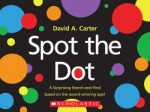 Spot the Dot created by David A. Carter
Spot the Dot created by David A. Carter
Novelty book published by Cartwheel Books, an Imprint of Scholastic
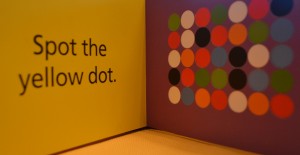
Spot the Dot is an appealing, brightly colored, interactive pop up book that includes flaps to lift, a wheel to turn and tabs to pull. Visual clues and predictable text encourage children – even those with delayed speech – to venture into ‘reading.’ My student thoroughly enjoys this book and now points to the words as he ‘reads’ each page and then pretends to ‘search’ for the dot.
Popular Home and Classroom Learning Games for Beginning Readers
Today we look at two popular learning games for beginning readers
I have used both spelling/reading games very successfully with four, five and six-year-olds. Neither is appropriate for younger children due to choking hazard caused by small parts.
We invite you to visit our page about beginning to read.
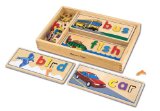 Melissa and Doug See and Spell
Melissa and Doug See and Spell
I recently purchased a Melissa and Doug See and Spell puzzle set for my Let’s Read Together program. The set consists of 60 plus colorful wooden letters and eight, two-sided template bases. As shown in my photo (right), the sixteen words include long and short vowels as well as digraphs.
I selected the Melissa and Doug See and Spell puzzle set because it is self correcting and it lends itself well to a group setting. When not being used in the template bases, the letters could be used to spell other words, they could be sorted by attributes or they could be put into alphabetical order.
When one or more children play with See and Spell it is an opportunity to practice letter, object and word recognition, matching, fine motor skills and/or spelling.
Melissa & Doug See & Spell at Amazon.com
Melissa & Doug See & Spell at Amazon.ca
I have used a Boggle Junior game in my Beginning to Read program for more than ten years. It is a great learning game for children who are learning to read and spell. The game consists of a series of illustrated three and four letter words. The words and illustrations are printed on durable cardstock. To play, a child selects a card and spells the word it illustrates using three or four letter cubes. The cubes fit into a sturdy base. The child has the option of seeing how the word is spelled (and simply matching the letters) or attempting to spell the word correctly and then checking to see if he is correct.
Boggle Junior can be enjoyed by one or more children. When one child plays with Boggle Junior it is an opportunity to practice letter, object and word recognition, fine motor skills, matching and/or spelling. When more than one child plays with Boggle Junior, playing the game becomes an opportunity to share and take turns. If two children are at different levels with respect to spelling and reading, one child could match the letters to correctly spell a word, another child could try to spell each word (without matching) and then flip a lever on the base to check the spelling.
The Boggle Junior word cards include short vowels, some long vowels and a few digraphs (i.e. fish).
Boggle Junior Game at Amazon.com
Boggle Junior Game at Amazon.ca
Family Literacy Program Development Part 2
Family Literacy Program format
Each session of our family literacy program began with a thirty minute “storytime” presented by a librarian. The storytime theme matched the weekly program theme. This ensured a good match between the librarian’s “storytime” and the program presented by the program facilitator. Following the “storytime,” the group learned a new rhyme or chant (in rebus form) and theme-related vocabulary. The group also reviewed material from previous sessions, sang the Alphabet Song and played learning games. For Mother’s Day and Father’s Day, the children (enthusiastically) made cards to take home.
Most weeks, the children spent time with the child minders while the program facilitator presented information to the adults. During this portion of the program, the child minders served a healthy snack of fresh fruit and juice or water.
The adult portion of the program included ways to help children with alphabet recognition, the importance of phonemic awareness, the value of reading aloud, ways to help a child with comprehension, why wordless picture books support vocabulary development as well as an introduction to affordable recreation opportunities in the community. The presentation of rebus chants and vocabulary activities also provided learning opportunities for adults.
Weekly handouts were provided to both the children and the adult participants. As well, multilingual information about accessing emergency services (911) was offered.
Introducing a Homework Component
During June, the children who participated in the family literacy program received “homework” assignments which included borrowing a book from the library, reading environmental print, counting, printing, drawing, comparing, borrowing a theme box from the library and enjoying read alouds. Most of the participants completed and returned the homework to the facilitator.
Also in June, the Summer Reading Club was actively promoted and most of the children signed up to participate. By the time the program ended, virtually all of the adult participants had library cards and were using them.
The final family literacy program session included the usual storytime, chants, vocabulary, snack and adult learning. The children who attended regularly received Certificates of Attendance. At noon, most of the participants walked to a nearby park and played with sidewalk chalk, blew bubbles and enjoyed the playground equipment. It was a happy, friendly time.
Family Literacy Program Development Part 1
This past year, I have been involved in developing a weekly Family Literacy program
Offered from April to June and September to November, the program is held at a neighbourhood library. It is intended to be a low-barrier family literacy program, especially appropriate for immigrant women who are caring for young children and who may be socially isolated. Initially intended to attract a maximum of twelve families to each session, the Spring 2012 program was enthusiastically attended by more than two dozen families each week. So far, our Fall numbers are almost as high.
As hoped, the program attracted a diverse population. The children in attendance range in age from one to five years. The adults who participate were almost all women; some are grandmothers and aunts however the majority are mothers, attending with their preschool-age children. Some participants have never been to the library prior to attending our family literacy program.
Many of the attending families are learning English as a Second Language. The group includes individuals who primarily speak Cantonese and others who speak Punjabi as their first language. As well, some families who attend regularly speak English fluently.
In keeping with the objective of making the program “low-barrier,” participants are not required to preregister and are welcome to join the program at any stage. For those who join the program partway through or who miss a session, handouts from the previous week(s) are easily obtained. The message is, “Whether you are able to attend every week, most weeks or some weeks, we are very happy to see you here.”
My team and I work to maintain a friendly, welcoming atmosphere for all participants. I am indeed fortunate to have multi-lingual child minders who assure participants that they were welcome to converse in their Mother Tongue during the program.
Getting Ready to Read Plus – Community Centre Program Day Two
Today was our second session of Getting Ready to Read Plus. Today’s theme was “Boats Afloat” and the letter of the day was “B.” The children were able to come up with all sorts of words that begin with the /b/ sound – bumblebee, bear, brown, blue, black, boat, boy, baby and more.
 Writing paper for kids - Rowboat
Writing paper for kids - Rowboat
Boating theme interlined paper for beginning writers.
Our story today was The Deep Cold River Story, written by Tabatha Southey and illustrated by Sue Savor. This is a very good read aloud for four and five year olds. I like using it with the “boats afloat” theme because there are several rowboats in the illustrations.
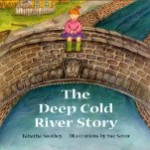 The Deep Cold River Story written by Tabatha Southey and illustrated by Sue Savor
The Deep Cold River Story written by Tabatha Southey and illustrated by Sue Savor
Imagine a deep, cold river running through a small town. One day, for no apparent reason, the river overflows its banks and floods the entire community. Many possible solutions to the unrelenting flooding are proposed but it takes a little girl to solve the problem and save the town. The Deep Cold River Story features a positive message about bedtime stories and offers a great opportunity for children to propose their own creative solutions to the problem.
A charming story featuring a young heroine and appealing illustrations, The Deep Cold River Story is 28 pages and will be enjoyed by children aged 3 to 6.
Earth Day Printables For Children Promote Environmental Awareness

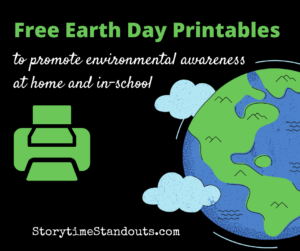
Free Earth Day Printables to Help Children Learn About the Environment, Recycling and Other Ways to Care for Our World
Elsewhere on this site ~
– Picture Books about Caring for Our Environment
We recommend reusing paper or cardstock when deciding to print. We choose to use file folders made from recycled materials and recycled cardstock.
We also use rubber stamps quite a lot.
To access our free Earth day printables, please do the following:
Step 1 – Our early childhood printables, including our Earth Day printables are in PDF format, if you don’t already use Adobe Reader, you will need to use it to access the free PDF downloads.
Step 2 – Pin this page, bookmark this page, share this page or “Like” us on Facebook.
Step 3 – Choose from any of our 250 free downloads, including these free printables.
Earth Day Recycling Domino Game and Board Game Cards
Print these game pieces onto cardstock and them cut them apart. For the board game, recycle paper scraps to create a fun file folder game board. Playing pieces promote recycling and environmental awareness as players race to the end.
 Green Domino Game
Green Domino Game
Uses a variety of "green" symbols
 Green Board Game Cards
Green Board Game Cards
Make your own board game and use these cards with it
Earth Day Writing Paper for Children
– beginning writers can use our writing paper to tell stories about Earth Day
 Writing paper for kids - Children Love the Earth
Writing paper for kids - Children Love the Earth
Green theme interlined paper for beginning writers.
 Writing paper for kids - Recycling Boy and Girl
Writing paper for kids - Recycling Boy and Girl
Green theme interlined paper for beginning writers.
 Writing paper for kids - Tree with bluebird
Writing paper for kids - Tree with bluebird
Tree theme interlined paper for beginning writers.
 Writing paper for kids - Tree including roots
Writing paper for kids - Tree including roots
Tree theme interlined paper for beginning writers.
Earth Day Riddles
– print the questions and the answers. Cut them apart and then challenge children to match the questions with the answers.
Have a look at our Earth Day and Environmental Awareness Pinterest Board
Match Upper and Lower Case Letters with this easy-to-make game
Children enjoy matching upper and lower case letters with this fun activity
This is a great time of year to pick up the makings of an inexpensive, colourful learning aid – at your neighbourhood dollar store. Easter merchandise is starting to appear and we want the multi-coloured two-part Easter eggs. Normally these are filled with candies but we are going to do something altogether different. We are going to use a permanent ink pen to print an upper case letter on one half of an egg and and the corresponding lower case letter on the other half. Children really enjoy searching through the ‘broken’ eggs. matching upper and lower case letters, ultimately assembling twenty-six whole eggs. I like the activity because using five or six colors makes finding a match fairly easy and also makes the activity somewhat self-checking.
For older children, compound words, rhyming words or antonyms could be used.
For more ways to help children learn the alphabet, check out our fee alphabet printables and our page about alphabet recognition.
A word of caution: This activity is not intended for children younger than age 3. Also, to ensure the activity is safe, please use eggs that are large enough to eliminate a risk of choking. The U.S. Consumer Product Safety Commission has determined: ‘Any ball with a diameter of 1.75 inches (44.4mm) or less that is intended for use by children younger than 3 years of age is banned.’ This is an excellent guideline – please check the size of the eggs before purchasing them.
Some of our Most Popular Alphabet Recognition Posts
Hover over the photo for a description of the activity. Click on the photo to read the full post
We invite you to follow Storytime Standouts’ Alphabet Craft Board on Pinterest
Follow Storytime Standouts’s board Alphabet Crafts on Pinterest.
Christmas Baking with Kids – Remember to Add a Pinch of “Love”
Cooking and baking with kids is worth the mess
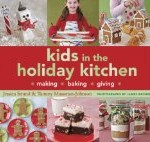 Kids in the Holiday Kitchen written by Jessica Strand and Tammy Massman-Johnson with photographs by James Baigrie
Kids in the Holiday Kitchen written by Jessica Strand and Tammy Massman-Johnson with photographs by James Baigrie
Cookbook highlighting Baking with Kids published by Chronicle Books
This is a wonderful time of year to engage young children in baking and cooking. Although messy at times, baking with kids and preparing yummy treats to share with others will create memories to last a lifetime – for you and your children. I remember creating sticky and lopsided gingerbread houses with my young boys. I think they ate more of the “decorations” than they actually managed to attach to the houses! Another year, we helped Grandma bake cookies because she was recovering from a stroke and couldn’t manage by herself. The kitchen was a disaster afterwards but the laughter, memories and delicious goodies more than compensated.
Kids in the Holiday Kitchen is a fun holiday book that is sure to inspire you and your children. Offering recipes for breakfast, lunch, dinner, snacks and desserts as well as craft ideas, the photographs will have you reaching for cookie cutters, rolling pins and icing sugar.
Meet the authors and hear about the book on YouTube
Kids in the Holiday Kitchen: Making, Baking, Giving at Amazon.com
Kids in the Holiday Kitchen: Making, Baking, Giving at Amazon.ca
Storytime Standouts has many free Christmas printables – You will find our Christmas songs, rhymes and fingerplays here, Christmas interlined paper here and Christmas words with pictures here.
8 Ways to Reinforce Your Child’s Reading Comprehension
Try some of these strategies to help your child with reading comprehension
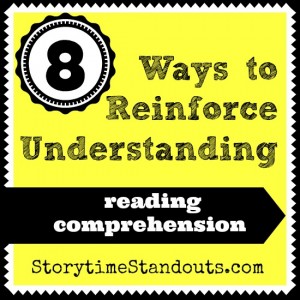
Here are eight ways to reinforce a beginning reader’s understanding

You will also want to read our page about reading comprehension.
Please click on the book covers for information about each picture book.
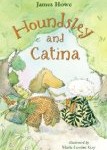 Before opening the cover of a book, take a moment to talk about the cover art and encourage your youngster to make some predictions. Do you suppose this will be a scary story or perhaps a silly one? Do you think this book will be like something else we have read together? Making predictions is a great way to help your child develop good reading comprehension skills.
Before opening the cover of a book, take a moment to talk about the cover art and encourage your youngster to make some predictions. Do you suppose this will be a scary story or perhaps a silly one? Do you think this book will be like something else we have read together? Making predictions is a great way to help your child develop good reading comprehension skills.Beyond Bedtime Stories, early literacy can Include more than reading
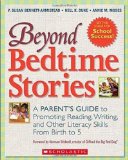 Beyond Bedtime Stories by V. Susan Bennett-Armistead, Nell K. Duke and Annie M. Moses
Beyond Bedtime Stories by V. Susan Bennett-Armistead, Nell K. Duke and Annie M. Moses
Beyond Bedtime Stories is a very thorough exploration of ways parents can promote early literacy with young children. The authors address dozens of important questions like “What if a book contains words or ideas that I find offensive?” and “Should I teach my child to read before kindergarten?” Beyond Bedtime Stories also includes suggestions of ways to fill your home with books even if you are on a budget, how to improve comprehension and ways to promote literacy inside and outside your home.
This is a very worthwhile resource for young families, daycare and preschool settings.
Environmental Print – Great for Beginning Readers
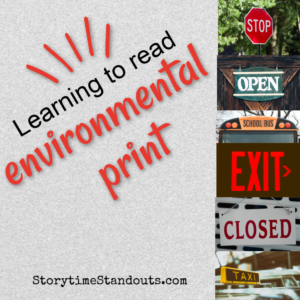
I’ve been having some fun this week. I grabbed my camera and headed out on a hunt for words in my community.
Environmental print is print that is all around us. In our homes, it is on food packaging and on other products we use. In a public building it is on door handles (PUSH, PULL) and above doorways (EXIT), when we go for a drive, it is on road signs (STOP), vehicles (POLICE, AMBULANCE), buildings (DRUG STORE) and in other public places (PARK, GARBAGE, RECYCLE).
For a preschool or kindergarten-age child, who is anxious to read his first word, environmental print may be “just the ticket.” Head out for a walk and see how many words your child can “read.” In all likelihood, he will already know how to read “McDonalds” or “Starbucks.”
Can he use context clues to correctly “read” more of the words around him? Can he “read” a situation and use the information he sees to make a correct guess about the letters and words he sees? Can he figure out the word used to label a garbage can or the word on the side of an emergency vehicle?
City Signs by Zoran Milich
Environmental Print picture book published by Kids Can Press

City Signs is a great book to share with four and five year olds, particularly youngsters who are anxious to read. City Signs is a series of photographs that each include at least one word. The word is shown in context so young “readers” can use their detective skills to make an educated guess about the word. Some of the words are unmistakable: ambulance, ice cream, life guard, horses. Other words are somewhat trickier: litter and supermarket could be mistaken for garbage or grocery store.
For children who are desperate for reading success, looking for words in the world and encouraging them to read “EXIT,” “PUSH,” “BUS STOP” and “LIFEGUARD” can be a real confidence builder.

When you go out with your child, take pictures of environmental print. When you get home, help your child to make a book to read. You can be sure he will be excited to show off his ‘new words’ to Grandma or Grandpa.
Food packaging and pictures from advertisements are also great sources of words to read. Work with your child to put together a collage or scrapbook to read and enjoy.




Our free Environmental Print printables for young children
There are some fabulous environmental print resources online, here are some of our favourites
Read Write Think – From Stop Signs to the Golden Arches: Environmental Print
Candy Bar Wrapper Image Archive
We invite you to follow Storytime Standouts’ Environmental Print Board on Pinterest
Follow Storytime Standouts’ board Environmental Print for New Readers on Pinterest.
Bolstering Phonemic Awareness, Getting Ready to Read While in the Car
Some of the keys to learning to read are noticing sounds in words (developing phonemic awareness), recognizing letters of the alphabet and understanding words.

Next time you’re in the car with your preschool or kindergarten child, spend a few minutes talking about sounds and words. Informal chats like these, can have a huge impact on her phonemic awareness and readiness for formal reading instruction…
Listening For Sounds at the Beginning of Words
Help your child to notice the sounds at the beginning of words by saying…
‘Here are some words that begin with the /b/ sound’ (Note: you should use the letter sound rather than the letter name) ‘boy, ball, bicycle, bat.’ I am going to say three words to you, can you tell me which one does not begin with /b/?’
(1) baby, ladybug, bumblebee
(2) shovel, bucket, blanket
(3) basket, apple, bird
Listening For Rhyming
Help your child to notice the sounds at the end of words by saying…
‘Here are some words that rhyme: bat & cat, ring & spring. Rhyming words are words whose endings sound the same. I am going to say two words to you, see if you can tell me if they rhyme.’
(1) king & ring
(2) up & down
(3) black & stack
Make a Substitution
Help your child to play with the sound words make (prior to reading or printing)…
(1) Change the sound at the beginning of dog to /h/
(2) Change the sound at the end of cat to /p/
(3) Change the sound in the middle of hat to /i/
Blend these sounds together
Help your child to play with the sounds letters make (prior to reading or printing)
(1) I am going to say three sounds. I want you to mush them together to make a word /d/ /o/ /g/
(2) /b/ /a/ /t/
(3) /h/ /u/ /g/
For more ways to help your child develop phonemic awareness, follow this link to visit our Phonemic Awareness page.
Discovering Meaning
‘These words are opposites; in & out, wet & dry, awake & asleep. Listen to my words. Are they opposites?’
(1) black & white
(2) yes & no
(3) sad & crying
For more ways to help your child with reading comprehension, follow this link.
Reading and Interpreting Pictures Supports Reading Comprehension

What could your child tell you about this picture? Would she say that it is Fall? Would she predict that the family is choosing a pumpkin for Halloween?
Reading and interpreting pictures includes noticing what is in the picture, what the characters are doing, the weather or time of day and other details (i.e. the color of a character’s clothing). A child could be asked to interpret the scene and confirm comprehension by telling or retelling the narrative.
For the first picture, we could ask questions such as what do you think these people are doing? or why do you think the man is pushing the wheelbarrow? or Why do you think these people are visiting a pumpkin patch?
Why does one man have gold coins in his hand? or Do you see anything that looks usual in this picture?
Wordless Picture Books Encourage Children to Interpret and Comprehend
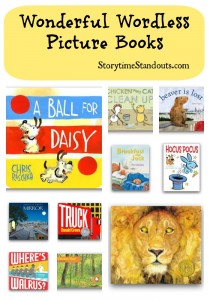 Wordless picture books are great tools for helping children to develop good comprehension and interpretation skills. We invite you to visit our Wordless Picture Books page to discover why great wordless picture books make narratives easily understood. Once a child has ‘read’ a wordless picture book with an adult, he should be encouraged to share the book with someone else. Making an opportunity to reconstruct and retell a story is valuable for a young child because reconstructing and retelling a story is a way to confirm comprehension.
Wordless picture books are great tools for helping children to develop good comprehension and interpretation skills. We invite you to visit our Wordless Picture Books page to discover why great wordless picture books make narratives easily understood. Once a child has ‘read’ a wordless picture book with an adult, he should be encouraged to share the book with someone else. Making an opportunity to reconstruct and retell a story is valuable for a young child because reconstructing and retelling a story is a way to confirm comprehension.
Sequencing Activities = Reading and Interpreting Pictures
Children who have learned to ‘read’ and ‘interpret’ pictures will benefit from sequencing activities. These provide children with the opportunity to ‘read’ pictures and determine the correct order of events.
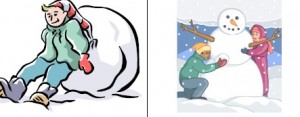 Here are links to three printable sequencing activities from my website and three from elsewhere on the internet.
Here are links to three printable sequencing activities from my website and three from elsewhere on the internet.
 Building a Snowman Sequencing Activity
Building a Snowman Sequencing Activity
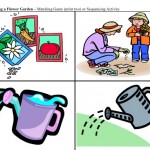
 Planting a Flower Garden Sequencing Activity
Planting a Flower Garden Sequencing Activity
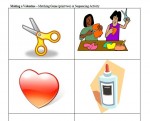
 Valentine's Day Sequencing Activity
Valentine's Day Sequencing Activity
Cut this Valentine's Day Sequencing Activity apart and have children put it together in the correct order or print two and use as a matching game.
British Council Goldilocks and the Three Bears Sequencing Printable
DLTK’s Story Sequencing Activities
For additional information about comprehension and reading readiness, follow this link to our page about reading comprehension.
Make Your Own Classroom or Homeschool Reading Games
Making reading games is a fun, inexpensive way to support young learners
Last month I was invited to make a presentation for the parents at a local preschool. Unlike most of my presentations, this was a hands-on workshop. We used alphabet stamps, pencil crayons
, alphabet stickers
and alphabet foam shapes
to make reading games. This sort of workshop becomes very social – the adults get to play with the craft supplies for a change!
Over the years, I have made many, many pre-reading and reading games. Apart from the fact that the games can be customized with respect to theme and difficulty, from a cost perspective, homemade can’t be beaten!
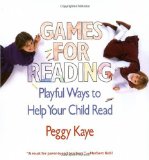 Whenever possible, I like to make activities self-correcting. For example, for some matching activities I put small marks on the back of the playing pieces so that the children can double-check their “matches.”
Whenever possible, I like to make activities self-correcting. For example, for some matching activities I put small marks on the back of the playing pieces so that the children can double-check their “matches.”
I’ve also tried to ensure that many of the games allow children to be active and move while they play and learn. For one of the games, I used green mesh placemats. I cut out lily pads (beige
works for elephant footprints) and then painted letters onto each lily pad / footprint. The clingy nature of the placemat material ensures that the lily pads are not slippery when placed in ABC order on the floor. The children love to hop from one lily pad or one elephant footprint to the next, singing the ABC song.
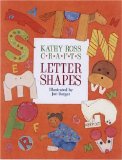 Gift wrap is another great source for learning games. I’ve made games to used with many, many themes – everything from birthday cupcakes to balloons, pond life, western, sports, truck theme
Gift wrap is another great source for learning games. I’ve made games to used with many, many themes – everything from birthday cupcakes to balloons, pond life, western, sports, truck theme and the circus. From time to time, you can find a licensed gift wrap that matches something you are doing in the classroom. I’ve used Cat in the Hat gift wrap
.
My favourite resource for pre-reading craft activities is Kathy Ross. For learners who are a bit older and in need of assistance with reading, Peggy Kaye has great ideas.
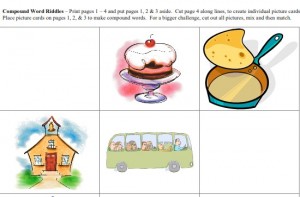 Don’t forget to check out our free, printable reading games.
Don’t forget to check out our free, printable reading games.
Our printable early literacy resources for making reading games are in PDF format, if you don’t already have Adobe Reader, you will need to download it to access the reading game download.
![]()
 Match the Ending Consonant Sound
Match the Ending Consonant Sound
Another way to help children develop phonemic awareness. Matching the ending consonant sound is more difficult than matching the beginning consonant sound.
 Sight Word Domino Game Part 1
Sight Word Domino Game Part 1
Download and print Part 1 of our Sight Word Domino game for beginning readers.
This can be used to help new readers to read high-frequency sight words confidently and fluently.
 Sight Word Domino Game Part 2
Sight Word Domino Game Part 2
Download and print Part 2 of our Sight Word Domino game for beginning readers.
This can be used to help new readers to read high-frequency sight words confidently and fluently.
 Sight Word Domino Game Part 3
Sight Word Domino Game Part 3
Download and print Part 3 of our Sight Word Domino game for beginning readers.
This can be used to help new readers to read high-frequency sight words confidently and fluently.
 Match Upper and Lower Case Letters Part One
Match Upper and Lower Case Letters Part One
Use with Part Two to create a matching activity
 Match Upper and Lower Case Letters Part Two
Match Upper and Lower Case Letters Part Two
 Consonant Game Board
Consonant Game Board
Use a die and markers, move along the "star" path from one star to another. When you land on a star, say the letter name or say the letter sound or say a word that starts with the letter.
 Sight Word Tic Tac Toe
Sight Word Tic Tac Toe
Download and print our Sight Word Tic Tac Toe game for beginning readers.
This can be used to help new readers to read high-frequency sight words confidently and fluently.
 Short Vowel Word Match Game
Short Vowel Word Match Game
Pictures to match with words.
 Animal / Alphabet Match
Animal / Alphabet Match
Free printable animal-theme matching activity for preschool and kindergarten. Match the sound at the start of the animal name with the letter.
A - Anteater
B - Bear
C - Cow
D - Donkey
 Match the Beginning Consonant Sound
Match the Beginning Consonant Sound
Cut the pictures apart and have children match the initial consonant sound - a great way to support the development of phonemic awareness.
Storytime Standouts’ early literacy resources download page
Peggy Kaye’s Games for Reading at Amazon.com
Peggy Kaye’s Games for Reading at Amazon.ca
Kathy Ross Crafts Letter Shapes at Amazon.com
Kathy Ross Crafts Letter Shapes at Amazon.ca
Developing Phonemic Awareness: How’s Your Nose, Rose?
You won’t regret using wordplay to support your child’s phonemic awareness – good phonemic awareness will help a young child with reading readiness and spelling.
At one of my Parent Education programs at a preschool last Fall, I talked about the importance of helping children to develop phonemic awareness. I explained that, together with alphabet recognition, good phonemic awareness is critically important for young learners. We want children to understand that words are made up of sounds and we’d like them to learn to play with the sounds in words. Developing a good understanding of rhyming is one element of this. Children who ‘get’ the concept of rhyming are gaining phonemic awareness.
After my presentation, one of the moms in the audience told me that she’s been playing, “How’s Your Nose, Rose?” with her young son. The game begins with one of them asking, “How’s Your Nose, Rose?” The other replies with, “How’s Your Back, Jack?” and the game continues until every possible body part rhyme has been exploited; “How’s your toe, Joe?”, “”How’s your arm, Parm?”, “How’s your leg, Peg?”, “How’s your brain, Jane?” etc.
What great fun and what a marvelous learning opportunity; it doesn’t cost a penny, it can be done anywhere, and asking, “How’s your nose, Rose?” just might make waiting in a long line a tiny bit easier. If you have a great idea for an inexpensive, portable reading lesson, I hope you’ll share it with us.
So, how’s your tummy, Mommy?
Be sure to click to visit our Phonemic Awareness page and learn more about this important indicator of readiness for reading and writing
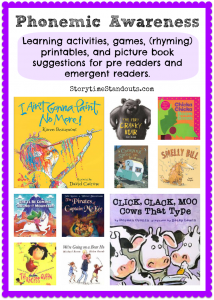 For more information, visit our page about phonemic awareness.
For more information, visit our page about phonemic awareness.
Free Printable Sight Words — Dolch, high frequency or whole words
There are many, many ways to support young readers with these free, printable sight words. Homeschoolers, classroom teachers and parents will love using them with beginning readers.
We want all readers to aquire the skills they need to decode unfamiliar words so that most words become sight words. This aspect of learning to read is also referred to as aquiring ‘Instant’, ‘Whole’, ‘Look & Say’, ‘Dolch’, &/or ‘High Frequency’ words.
We know readers with large sight word vocabularies read more rapidly and more fluently than readers whose sight word vocabularies are small. It is logical that a reader who is able to ‘instantly’ recognize and understand the words he or she reads, will be faster and more fluent than a reader who must often pause in order to decode unfamiliar words.
We also know that some English words are not appropriate for ‘sounding out’ – they occur much too often and are not necessarily phonetic (for example ‘there’ does not sound anything like /t/+/h/+/e/+/r/+/e/).
Our free early literacy printables, including our sight word printables are in PDF format, if you don’t already have Adobe Reader, you will need to download it to access the printable sight words.
![]()
You will find our entire selection of free printable alphabets here and all of our early literacy printables here.
On our “Printables” page you will find links to printable sight words, that is, lists of high frequency words. We also refer to these as whole words. We have organized the sight words in groups of ten (per page) and a total of sixty sight words per link. (#1-60, 61-120, 121-180 & 181-240). Here is a shortcut…
 Sight Words 1 to 60
Sight Words 1 to 60
Download and print these high-frequency sight word flashcards for beginning readers to learn.
This is the first set.
 Sight Words 61 - 120
Sight Words 61 - 120
Download and print these high-frequency sight word flashcards for beginning readers to learn.
This is the second set.
 Sight Words 121 - 180
Sight Words 121 - 180
Download and print these high-frequency sight word flashcards for beginning readers to learn.
This is the third set.
 Sight Words 181 - 240
Sight Words 181 - 240
Download and print these high-frequency sight word flashcards for beginning readers to learn.
This is the fourth set.
The printable lists can be used for flash cards (I don’t call them ‘flash cards’ with children. I prefer something a bit zippier) but the real fun is in finding creating ways to introduce these words and make them ‘instant.’
There are dozens of ways to make learning sight words fun – especially if you have access to colored paper, attractive stickers, cardstock and/or file folders. Adding authentic game pieces (like dice, markers, spinners, and penalties (for example “go back two”) will help to engage your child in the activities. In all likelihood, he or she will be glad to help you create board games, memory games, special tic tac toe squares or bingo cards.
Note, we also have sight word dominoes, practice sentences and special PDFs (i.e. seasonal, vehicles, and activity-related sight words) that include words and pictures.
 Sight Word Domino Game Part 1
Sight Word Domino Game Part 1
Download and print Part 1 of our Sight Word Domino game for beginning readers.
This can be used to help new readers to read high-frequency sight words confidently and fluently.
 Sight Word Domino Game Part 2
Sight Word Domino Game Part 2
Download and print Part 2 of our Sight Word Domino game for beginning readers.
This can be used to help new readers to read high-frequency sight words confidently and fluently.
 Sight Word Domino Game Part 3
Sight Word Domino Game Part 3
Download and print Part 3 of our Sight Word Domino game for beginning readers.
This can be used to help new readers to read high-frequency sight words confidently and fluently.
Important Note: Please limit the number of sight words you introduce at any one time – five or ten at most.
You will be interested in our Sight Word board on Pinterest
Making Motherhood Fun… Mommy Really Can Be Amazing!
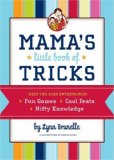 Mama’s Book of Tricks by Lynn Brunelle
Mama’s Book of Tricks by Lynn Brunelle
Motherhood book published by Chronicle Books
When my two boys were very young, I often told them that I was amazing! I always said it in a laughing way. I was not trying to be arrogant but rather thought that sooner or later they would both decide I was an idiot so perhaps if I referred to myself as ‘amazing‘ I could delay the almost inevitable ‘my mom is an idiot‘ phase for a month or two.
Actually, so far, my strategy has worked quite well. Now, I rarely have to remind my family that I’m amazing. Instead, when I find something that was assumed lost or if I manage to do something notable, it is not at all unusual to have one of the boys or my husband refer to me as, Mommy Amazing. Not bad, eh? My devious plan appears to be working.
Imagine my surprise last night when I discovered, Mama’s Little Book of Tricks by Lynn Brunelle. She’s put together, ‘fun games, cool feats, & nifty knowledge’ to ‘keep the kids entertained’ and make motherhood fun.
The publisher thinks it will work for kids ages 2-7 but I’m pretty sure there is more than one idea that will impress preteens.
At midnight last night, much to my husband’s chagrin, I was quoting the Nine Cool Bug Facts and contemplating the Four Impossible Kid Challenges. This book is great fun and might just lengthen my ‘Mommy Amazing’ status for awhile longer. Who could ask for more than that?
Lynn Brunelle’s Website: Tabletop Science
Mama’s Little Book of Tricks at Amazon.com
Mama’s Little Book of Tricks at Amazon.ca



